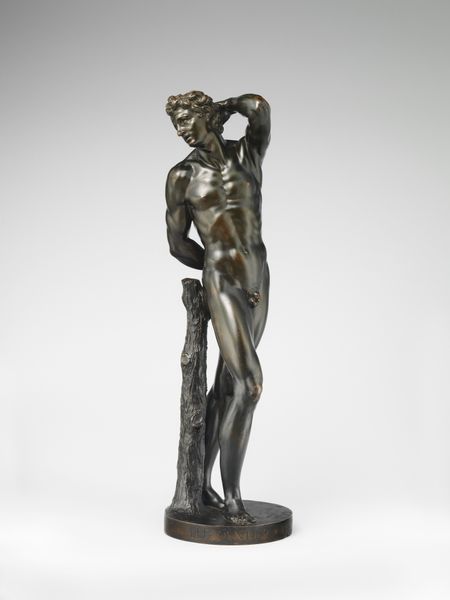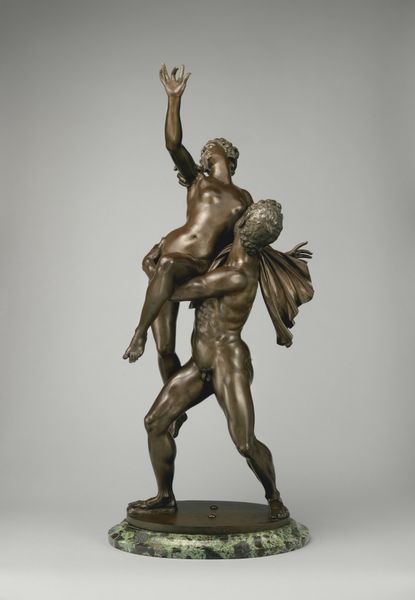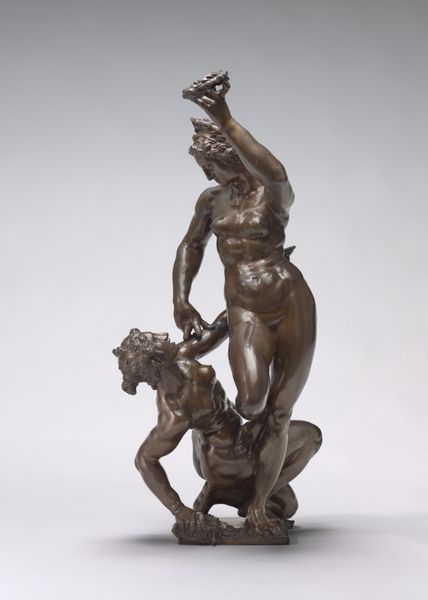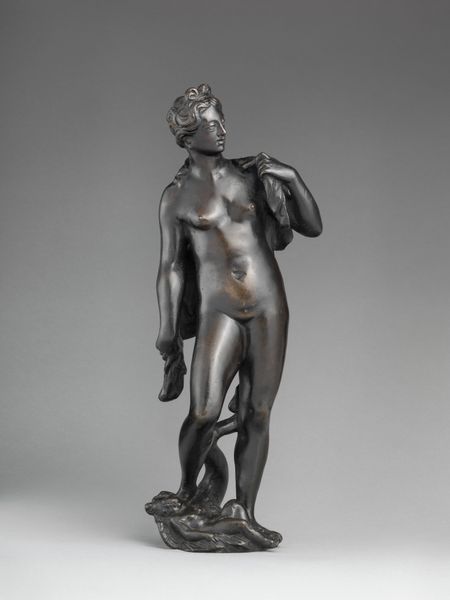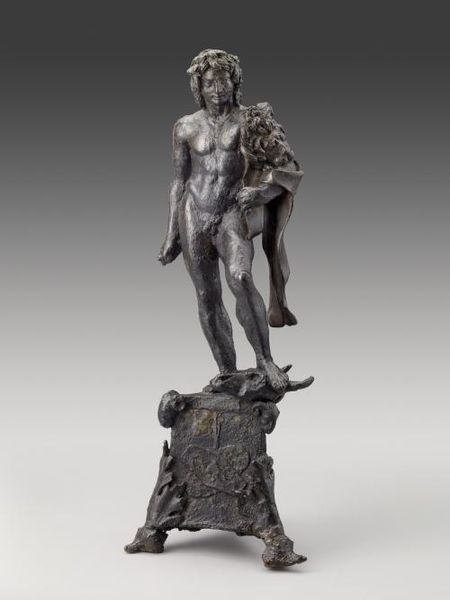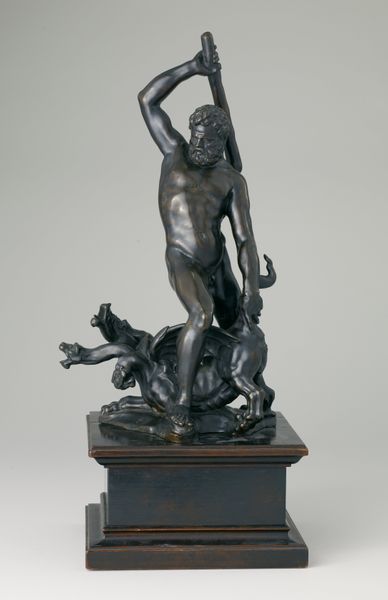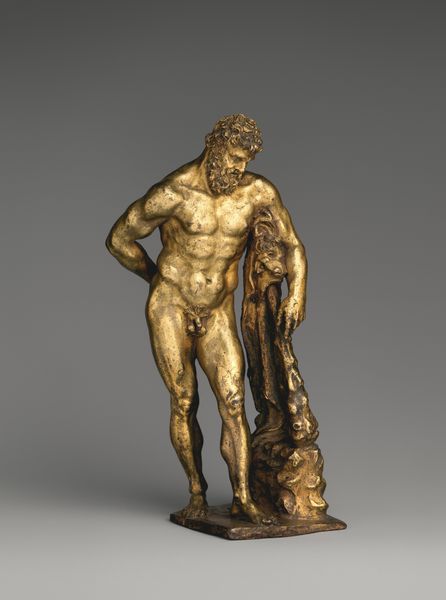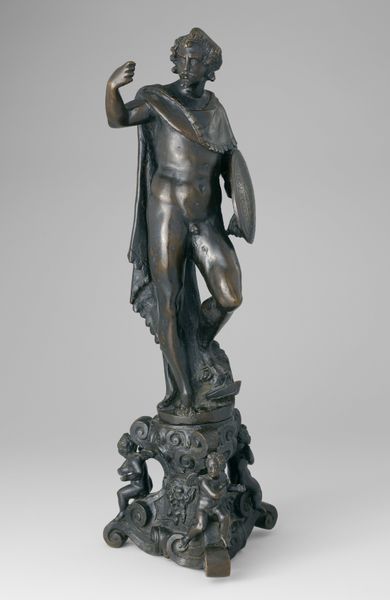
#
clear colour scheme
#
2d character
#
3d sculpting
#
sculpture
#
3d character model
#
sculptural image
#
unrealistic statue
#
vertical object
#
3d character modeling
#
statue
Dimensions: height 187 cm, width 96 cm, depth 60 cm, weight 690 kg, weight 770 kg, width 52 cm, depth 73 cm
Copyright: Rijks Museum: Open Domain
Curator: Immediately I'm struck by its rather muted coloration—the somber tone makes it read like a memento mori rather than a celebration of revelry. Editor: Well, let's pull back and set the stage. What we have here is "Bacchus and Ampelos," sculpted in 1782 by Francesco Righetti. The figures, as the title suggests, depict the Roman god of wine and his companion. Curator: Right. The traditional Bacchus imagery is clear: the vines in his hair, the sensual pose. And yet, what is not here affects me more. There are none of the typical, ripe colors you might expect from this narrative. Where are the bacchanalia? Where's the abundance? Editor: Perhaps Righetti was aiming for a more psychologically nuanced depiction. Look at the details: Bacchus' protective arm around Ampelos, Ampelos' adoring gaze fixed on the god. They both embody idealized forms which tap into very specific visual languages—classical statuary, mythological subjects… Curator: Agreed, and it's impossible to ignore how that idealization functions. How the myth-making operates, what is purposefully included, and what remains omitted. Look, even within mythology the relationships are complex, political—and there's power at play, the dynamics are loaded, they tell of both adoration, dependency and exploitation. Editor: I understand. These figures embody concepts far bigger than themselves; this is no simple portrayal of two figures, but a constellation of power and tradition conveyed through familiar iconography. It connects to centuries of images invoking similar themes. It's as much about how we choose to represent those relationships as it is about the relationship itself. Curator: Precisely. Seeing how historical visual tropes operate within the present allows for understanding continuities of power and marginalization and can enable the construction of alternative narratives. Editor: So it is a conversation with the past, where images become living vessels that contain our ever-evolving understanding. Curator: Exactly, a sobering but necessary insight I believe we’ve revealed within Righetti's "Bacchus and Ampelos."
Comments
rijksmuseum almost 2 years ago
⋮
Bacchus, the god of wine, fell in love with the young satyr Ampelos. When the latter died in a tragic accident, Bacchus changed him into a vine and made wine from his blood. The chalice in Ampelos’s hand refers to this metamorphosis.
Join the conversation
Join millions of artists and users on Artera today and experience the ultimate creative platform.


